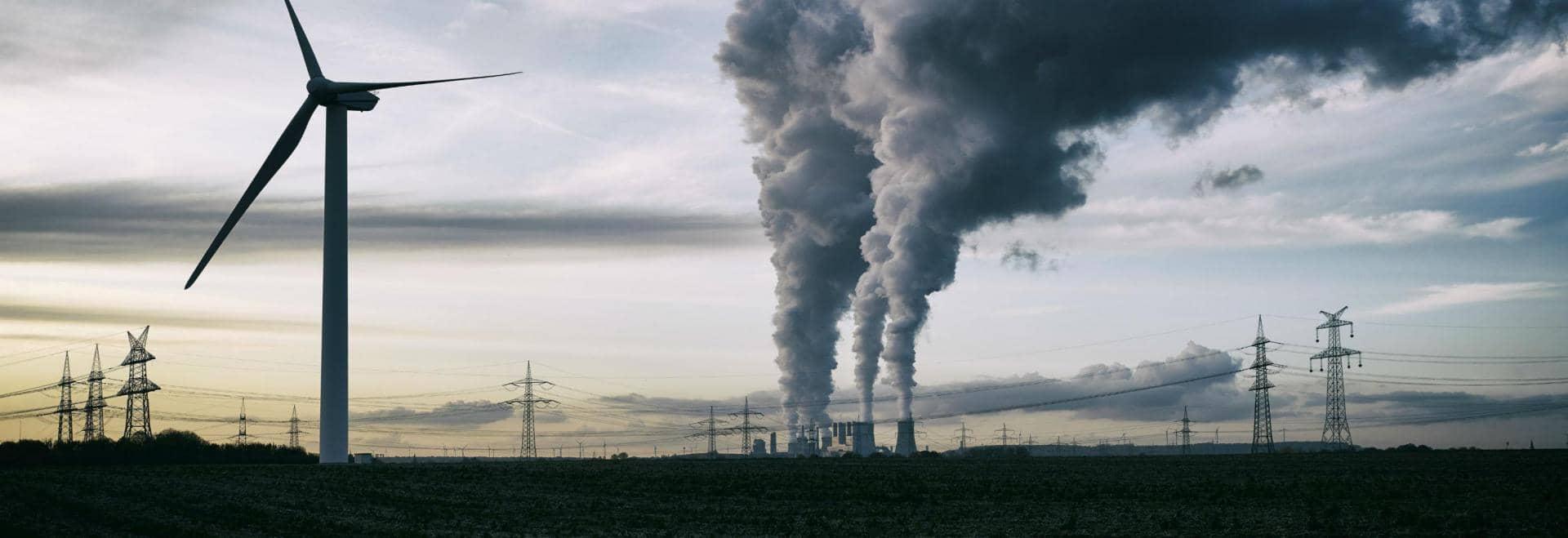
Market Perspectives March 2020
Financial market sell-offs, on concerns over the impact on growth of the spreading coronavirus, dented a strong start to the year and highlighted the attraction of diversified portfolios.

06 March 2020
7 minute read
By Damian Payiatakis, London UK, Head of Impact Investing
With efforts to address climate change expected to accelerate, investors face the risk of their portfolios not being ready for the transition to a low-carbon economy.
Commitments made in 2015, and progress to them, as part of the Paris Agreement will be reviewed this year at the United Nations Climate Change Conference (known as COP26) in Glasgow. Already we know the current plans do not deliver the two degree centigrade commitment, let alone the 1.5 degree ambition. Furthermore, most countries are not on track to deliver them.
In February’s Market Perspectives, we highlighted the physical effects and risks for investors, of not delivering on the above plans. With the increasingly visible physical effects of climate change, and growing public sentiment, countries and companies will be expected to take more action, and faster, to address climate change and reduce carbon emissions. This creates a corollary of transition risks, or the financial risks which could result from the process of adjusting to a low-carbon economy.
Transition risks are not as immediately visible as say a hurricane or moves in average temperatures. They are the more structural and systemic shifts that climate change, and efforts to address it, will have on companies and investors.
Given the potential financial risks, investors need to be increasingly aware and positioned for the implications of the actions taken to achieve climate targets. To help that process, we look at the transition risks that arise from moving towards a greener economy and strategies associated with climate change adaptation and mitigation.
Investors need to be increasingly aware and positioned for the implications of the actions taken to achieve climate targets
Transition risks arise from the requirement to deliver climate targets and from the process of switching to a low-carbon economy. These are generally categorised as policy and legal, technology, market, and reputational risk. Let’s review these in turn.
Policy changes will either seek to constrain contributors to climate change or promote adapting to its effects. This can range from carbon-pricing mechanisms, emissions-reporting obligations, sustainable land-use practices, phasing out fossil fuel subsidies or encouraging greater energy-efficiency.
Companies that are not prepared for these changes, and fail to mitigate the impacts in a timely manner, face considerable policy risk. Those businesses that avoid or actively lobby against these changes may face potential litigation risks from consumers, investors and governments.
Market risks are created with shifts in supply and demand for certain commodities, products and services. Like the fashion for reducing plastic bags and plastic straws usage, changes in customer behaviour can rapidly affect an industry’s viability. Market risks may affect production costs, revenue mix or asset re-pricing.
Technological innovation is needed to address climate change. For companies, either development of or use of new technologies always comes with certain risks. R&D expenditure may not lead to results. Capital expenditure in the early industry leader may have to be written-off as lower cost technologies are developed.
More significantly, is the risk of not taking action to, for example change existing production to lower emissions options, which can generate greater cost and competitiveness risks.
Finally, reputational risk stems from changing social perceptions of an organisation’s contribution or detraction to climate change. Consumers are becoming more aware about the impact to the climate of various products.
Customers and communities are more likely to demand – in some cases through strikes or protests – more commitment to the transition to a low-carbon economy from companies. Fast changing social dynamics can be extremely damaging to a company’s reputation and negatively affect their license to operate, attract talent, or profitability.
The transition to a climate-resilient and low-carbon future carries both risks and opportunities that could unfold gradually or through sudden shocks. Transition risks tend to have a built-in lead time, allowing companies to plan and adjust. However, the frequency of abrupt shocks from physical risks, accelerated policy changes and sudden shifts in social expectations have recently increased.
Efforts to meet climate goals require far-reaching changes to the energy system, carbon-intensive industries and consumer behaviours. Almost all resource-intensive sectors (such as cement, glass and agrochemicals) will need to decarbonise. High-carbon sectors that fail to transition towards a low-carbon environment could end up with substantial stranded assets. While the potential value-at-risk posed by transition risks vary widely, markets have recently started to shun “polluting” industries towards more environmentally-friendly alternatives.
According to the G20 Financial Stability Board’s Taskforce on Climate-related Financial Disclosures (TCFD), companies face a range impacts from transition risks. Examples of these are included below:
| Sector | Illustrative transition risks (Short and long-term) | Potential impact on value chain |
|---|---|---|
| Agriculture, Food & Beverage |
|
|
| Apparel |
|
|
| Tourism |
|
|
| Insurance |
|
|
| Electic Power |
|
|
| Oil & Gas and Mining |
|
|
In the next few years, transition risk could increase significantly. Besides the implications of physical risks, investors also need to consider how the low-carbon transition could financially impact a variety of sectors and asset types held within their portfolios. There are several proactive practices that can improve investment judgement about climate risks and opportunities.
As no company is immune from climate risk – in one form or another – scenario analysis can be the first step in assessing a portfolios risk and opportunity exposure to transition risk. This step allows to forecast the financial impact of different climate scenarios (2C-4C), and helps organisations and investors to better understand the climate transition over long term.
For strategic asset allocation, investors can assess the relative implications of climate scenarios on different geographies, asset classes and time horizons.
For many investors, assessing a company’s carbon footprint is also a technique in understanding the impact of certain investments and the relative climate risk due to carbon exposure. Even though carbon footprinting has some limitations (in say consistency and scope of data), by calculating the tonnes of atmospheric carbon dioxide equivalent per million dollars of revenue for an investment, the method facilitates decision making around de-risking.
Finally, investors should also assess whether organisations and their senior executives are actively planning for climate risk and addressing their environmental, social, and governance (ESG) footprints. This can be achieved through active engagement between parties and transparent disclosure of climate-related information beyond published reports and data – in line with the TCFD’s recommendations.
Climate-change related risks can quickly add up to hundreds of billions of dollars globally. As the world accelerates its move towards a low-carbon economy, transition risks are rapidly becoming visible. The above methods enable companies and investors prepare accordingly: plan for a number of different scenarios, depending on the extent and impact of global climate change and build more climate-resilient portfolios.
As the world accelerates its move towards a low-carbon economy, transition risks are rapidly becoming visible

Financial market sell-offs, on concerns over the impact on growth of the spreading coronavirus, dented a strong start to the year and highlighted the attraction of diversified portfolios.

Barclays Private Bank provides discretionary and advisory investment services, investments to help plan your wealth and for professionals, access to market.
This document has been issued by the Investments division at Barclays Private Banking division and is not a product of the Barclays Research department. Any views expressed may differ from those of Barclays Research. All opinions and estimates included in this document constitute our judgment as of the date of the document and may be subject to change without notice. No representation is made as to the accuracy of the assumptions made within, or completeness of, any modeling, scenario analysis or back-testing.
Barclays is not responsible for information stated to be obtained or derived from third party sources or statistical services, and we do not guarantee the information’s accuracy which may be incomplete or condensed.
This document has been prepared for information purposes only and does not constitute a prospectus, an offer, invitation or solicitation to buy or sell securities and is not intended to provide the sole basis for any evaluation of the securities or any other instrument, which may be discussed in it.
Any offer or entry into any transaction requires Barclays’ subsequent formal agreement which will be subject to internal approvals and execution of binding transaction documents. Any past or simulated past performance including back-testing, modeling or scenario analysis contained herein does not predict and is no indication as to future performance. The value of any investment may also fluctuate as a result of market changes.
Neither Barclays, its affiliates nor any of its directors, officers, employees, representatives or agents, accepts any liability whatsoever for any direct, indirect or consequential losses (in contract, tort or otherwise) arising from the use of this communication or its contents or reliance on the information contained herein, except to the extent this would be prohibited by law or regulation..
This document and the information contained herein may only be distributed and published in jurisdictions in which such distribution and publication is permitted. You may not distribute this document, in whole or part, without our prior, express written permission. Law or regulation in certain countries may restrict the manner of distribution of this document and persons who come into possession of this document are required to inform themselves of and observe such restrictions.
The contents herein do not constitute investment, legal, tax, accounting or other advice. You should consider your own financial situation, objectives and needs, and conduct your own independent investigation and assessment of the contents of this document, including obtaining investment, legal, tax, accounting and such other advice as you consider necessary or appropriate, before making any investment or other decision.
THIS COMMUNICATION IS PROVIDED FOR INFORMATION PURPOSES ONLY AND IS SUBJECT TO CHANGE. IT IS INDICATIVE ONLY AND IS NOT BINDING.